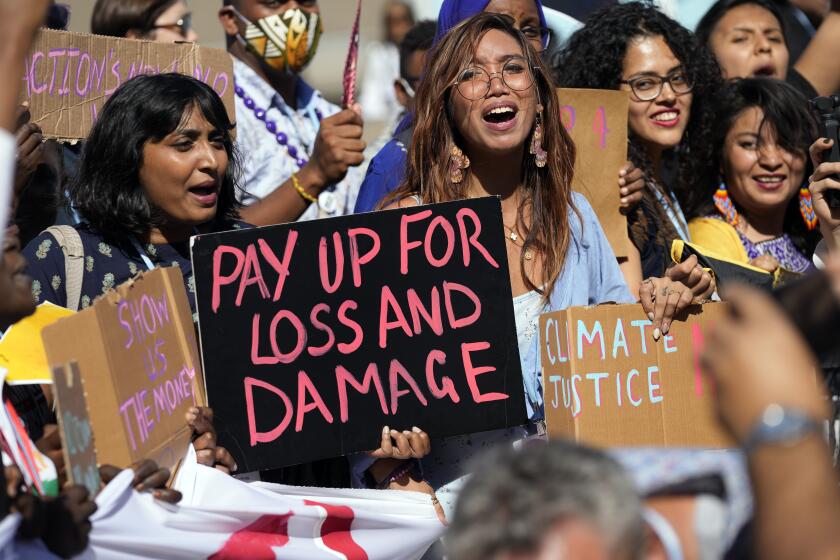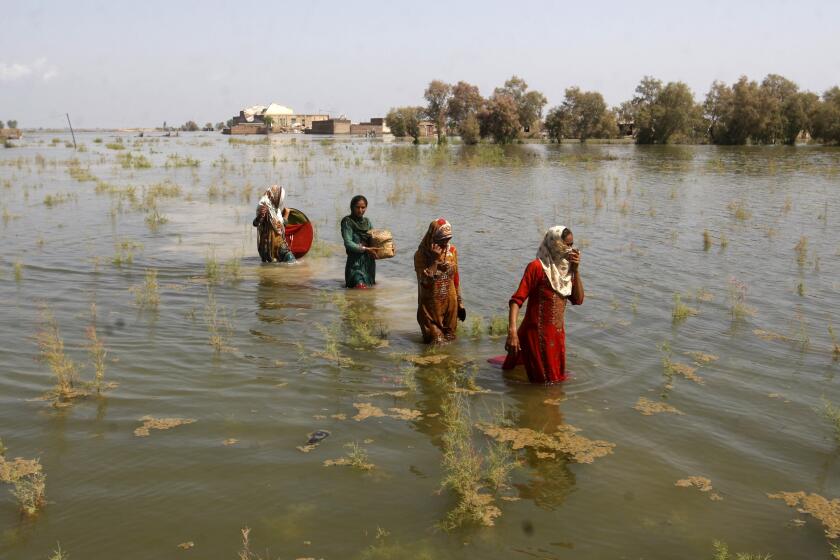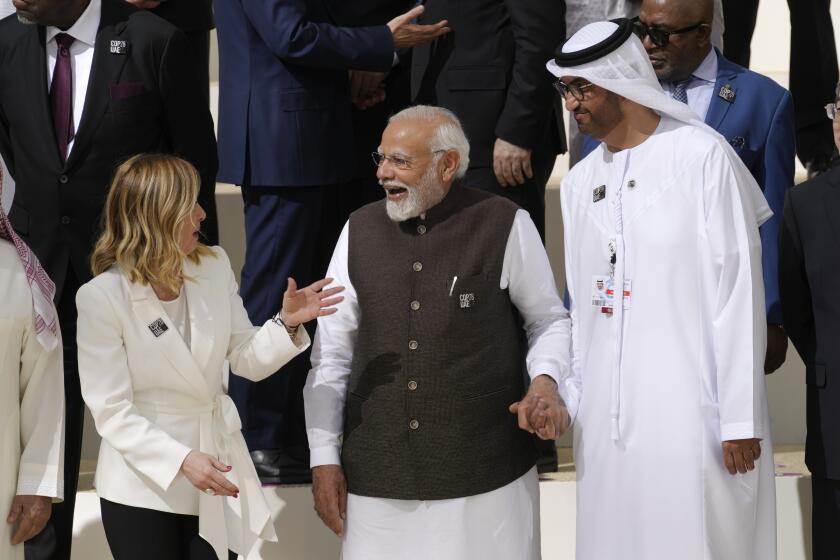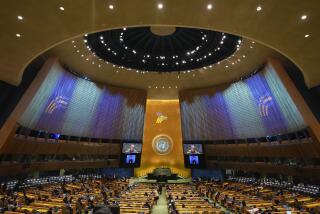5 reasons why COP28, the U.N. climate conference, is worth your attention
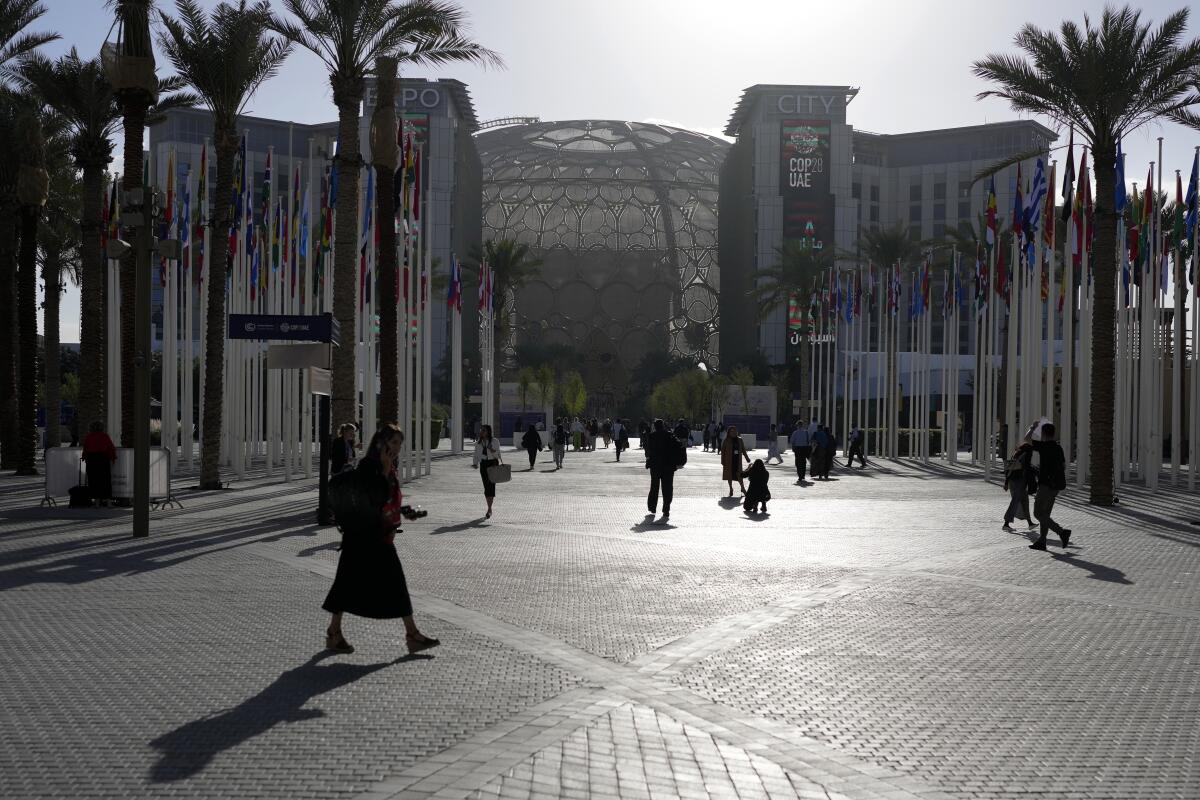
DUBAI, United Arab Emirates — Ask most people what the annual U.N. climate talks are and the likely answer will be: “Huh?” Ask those who do know and the answer may be: “Why should I care?”
The negotiations, called Conference of Parties, are nearly two weeks long and in their 28th iteration in Dubai. Delegates use wonky terms like “NDCs” “1.5 degrees” and “loss and damage,” not exactly conversation starters at parties. Any final decision is nonbinding, meaning countries can agree to something and then not follow through. And when tens of thousands of people travel to the event, a lot of greenhouse gas emissions are produced, which is contrary to the entire point of the conference.
So why bother?
Even many climate watchers sometimes ask that question, and there is a growing debate about whether the current process needs major reforms. But viewed with a long lens — and with the proviso that progress is often more of a slow trickle than a dramatic event and impact — there are many reasons that the talks can prove worthwhile.
They exert peer pressure
The push in a public forum for compliance is a key part of COP — in the form of the development of “Nationally Determined Contributions,” referred to as NDCs.
These are plans by individual countries to reduce their use of oil, gas and coal, which produce greenhouse gas emissions that cause climate change, and lay out how they plan to adapt to impacts of extreme weather events.
Nearly all the world’s nations finalized the creation of a fund to help compensate countries struggling with loss and damage from climate change.
The plans are required by all nations that signed on to the 2015 Paris agreement, arguably the most significant Conference of Parties to date. The plans are public, setting broad targets that industries and individuals in respective countries can see while also providing a chance for other countries, and news organizations, to scrutinize them. Countries are encouraged and expected to update and “raise ambition” in their plans, creating a level of peer pressure for nations to keep promises.
They produce clear goals
That’s something that individual entities sometimes have trouble doing.
The Paris agreement established a defining goal that has guided climate discussions ever since: Cut emissions from the burning of fossil fuels to make sure average global temperatures don’t go beyond 2 degrees Celsius (3.6 degrees Fahrenheit) since preindustrial times, and ideally not over 1.5 degrees Celsius (2.7 degrees Fahrenheit). Currently, temperatures have increased about 2.2 degrees Fahrenheit.
As extreme weather events driven by climate change have increased and intensified, climate scientists have pushed to limit warming to 1.5 degrees. These days, just about every discussion about climate change has 1.5 in mind.
Humanity still has a chance, close to the last one, to prevent the worst of climate change’s future harms, a top U.N. panel of scientists said Monday.
For example, that 1.5 guide is at the heart of the Biden administration’s climate goals, which include the Inflation Reduction Act, the largest climate legislation in U.S. history, that is pumping billions of dollars into green energy transition.
It’s also used as the lens through which many decisions are seen. When oil companies announce plans to launch new drilling projects that will lock in oil and gas production for decades, policymakers can and do criticize the plans as not keeping within the 1.5 goal. That doesn’t necessarily stop oil companies, or anybody, from making decisions that go against the goal. Still, it provides a frame of reference, which is powerful.
They frame debates
Deciding how to talk about something can be an important part of getting things done.
Last year’s climate talks, COP27, in Egypt produced a landmark agreement for rich countries to contribute to a fund to help developing nations adapt to climate change. For decades, environmental activists had argued that a “loss and damage” fund was necessary because rich nations, which industrialized with fossil fuels, were largely responsible for climate change while developing countries were being hit the hardest, as they didn’t have the resources to withstand floods, heat waves, prolonged drought and other manifestations of a warming world.
News and analysis about water quality, air pollution, weather patterns, environmental issues and climate change.
Early discussions of loss and damage at COPs were always on the fringes, not even on the official agenda. That changed last year as the topic, and thus the decision, ended up being the centerpiece of the summit.
In a larger sense, today many discussions of climate, from reducing emissions to paying for a transition to green energies like wind and solar, are framed around the idea that rich countries are historically responsible for the current situation and thus have a moral imperative to pay more to confront it.
They foster slow but solid progress
The glacial pace of discussions, with no binding decisions or ways to enforce agreements, may seem like a formula for failure in a world accustomed to visible, sometimes splashy resolutions.
However, seen over the course of nearly 30 years of summits, the outcomes could be called cautiously optimistic successes. For example, 10 years ago the level of greenhouse gas emissions had the world on track to warm 4 degrees Celsius (7.2 degrees Fahrenheit) by 2100, which scientists say would create devastating extremes.
Top world leaders talk of climate crisis at U.N. summit. They say they must act on fossil fuels, war
Dozens of world leaders at the United Nations climate summit say they know the planet is dangerously overheating. What action will they take?
Today, models have the world warming by 2 to 2.5 degrees Celsius. That is still significantly beyond the 1.5-degree target and poses threats to humans; tenths of a degree matter a lot when it comes to extremes.
But overall, humanity is on a much better path. While many factors have gone into lowering the curve on emissions — technological advances, environmental laws in many countries, a move toward electric vehicles, among others — U.N. climate negotiations have undoubtedly been a central factor.
Toward a more sustainable California
Get Boiling Point, our newsletter exploring climate change, energy and the environment, and become part of the conversation — and the solution.
You may occasionally receive promotional content from the Los Angeles Times.
There’s no other option
Ultimately, COP is the only game in town.
Even if none of the above is convincing, the reality is there is currently no other way for the world to collectively address climate change. Consider how difficult it can be for two people to agree on anything. How about 200 countries?
The Conference of Parties process gives every nation in the world, whether rich or poor, large or small, a seat at the table to discuss how climate change is affecting them and how they believe the world should confront it. They also give a forum to people of all walks of life to exchange ideas, from young environmentalists and Indigenous activists to bankers and leaders of many industries.
The wonky speeches, lots of discussion and disagreements will continue, all with the hope of fighting climate change. That is worth a conversation starter at parties.
More to Read
Sign up for Essential California
The most important California stories and recommendations in your inbox every morning.
You may occasionally receive promotional content from the Los Angeles Times.
